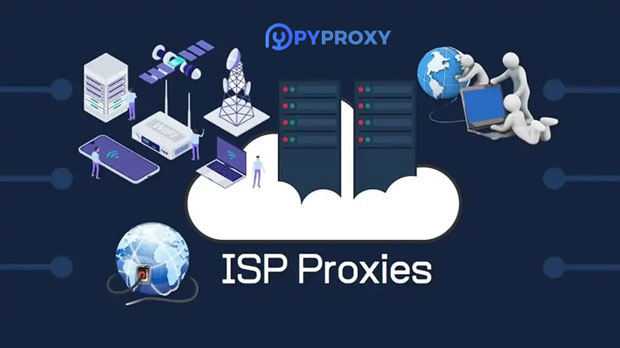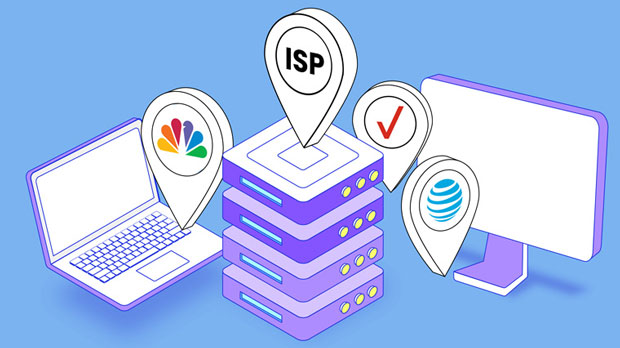Why do proxy servers cause network slowdowns? How to optimize?
In today's digital landscape, proxy servers are widely used for enhancing privacy, security, and bypassing geo-restrictions. However, one major drawback of using proxies is that they can sometimes lead to a noticeable slowdown in network performance. The primary reason for this slow performance lies in how proxy servers handle traffic, the additional processing they require, and the potential bottlenecks they introduce. Understanding the factors that contribute to this issue is crucial in addressing and mitigating the slowdowns. This article will explore why proxy servers can cause network lag and how to optimize them to ensure smoother and faster browsing experiences. Understanding the Role of Proxy ServersA proxy server is an intermediary between a client (like your computer) and the server hosting the desired content. When a client requests a web page or service, the request is first routed to the proxy server, which then forwards it to the destination server. Once the content is retrieved, it is sent back through the proxy server to the client.Proxies are often used to enhance privacy, access restricted content, or improve security by filtering out potentially harmful traffic. However, proxies add an extra layer of routing, which can result in increased latency and slower connection speeds. Several factors contribute to this, which we will explore in greater detail.Key Reasons Proxy Servers Cause Network Slowdowns1. Additional Routing and Processing DelaysThe core function of a proxy server is to forward traffic between the client and the destination server. This extra hop in the network path inherently adds a small delay to the process. While this delay may not always be noticeable, for users relying on high-speed connections or dealing with large data transfers, the added time can result in a significant slowdown. The process of routing through a proxy is more time-consuming than a direct connection between the client and the server.Moreover, proxy servers often perform additional processing on the data. For example, they may inspect, filter, or cache the data to provide added security or improve performance for future requests. While these actions are beneficial in some contexts, they require computational resources, which can further delay the network’s responsiveness.2. Bandwidth Limitations and Traffic CongestionAnother common issue that causes proxies to slow down network speeds is bandwidth limitations. Many proxy servers, particularly those that are free or public, have limited resources. These servers may be overloaded with users trying to access content simultaneously, causing congestion. As more users share the same proxy server, the available bandwidth is divided among them, which can lead to slower speeds for each user.Private proxies, even when configured with dedicated resources, can also face slowdowns if the server is not properly scaled to handle the volume of requests it receives. This is particularly true for businesses or organizations using a proxy server to manage traffic across multiple devices or locations. If the proxy server is not optimized or lacks the necessary capacity, it will become a bottleneck in the network.3. Proxy Server LocationThe geographical location of the proxy server plays a crucial role in determining the speed of your connection. If the proxy server is located far from the client or the destination server, the additional distance increases the time it takes for data to travel. This delay, known as latency, can cause slower response times and reduce the overall performance of the network.Using a proxy server located in a different country or region than the user can lead to significant slowdowns, as the data must travel further, increasing the time it takes to fetch the requested content. Proxies that are located far from the destination server can create unnecessary delays that are perceived as sluggish browsing or streaming.4. Encryption OverheadMany users choose to route their traffic through proxy servers that offer encryption, as this adds an extra layer of security. However, encryption introduces its own set of challenges that can affect performance. Encrypting and decrypting data takes additional time and processing power. This is especially true when using proxies that support secure connections (HTTPS) or implement advanced encryption protocols. While encryption is crucial for ensuring privacy and security, the overhead involved can create a noticeable slowdown. This can be exacerbated when the proxy server is not properly configured to handle high volumes of encrypted traffic, leading to delays in the processing and transmission of data.How to Optimize Proxy Servers to Improve Network PerformanceWhile proxy servers can cause slowdowns, there are several optimization techniques that can help reduce or eliminate performance issues. Below are some strategies for improving the efficiency and speed of proxy servers.1. Use High-Quality Proxy ServersTo avoid issues like congestion and poor bandwidth allocation, it’s important to use reliable and high-performance proxy servers. If you are using public proxies, consider upgrading to a paid proxy service that offers better reliability, higher bandwidth, and optimized routing. For organizations, deploying dedicated private proxies with sufficient resources can ensure that the network traffic is processed quickly and efficiently.2. Implement Load BalancingIn high-traffic environments, load balancing can be an effective way to distribute network traffic evenly across multiple proxy servers. This ensures that no single server becomes overwhelmed with requests, which can lead to slowdowns. By spreading the traffic across several servers, the load is balanced, and the overall network performance improves. Load balancing solutions can be automated, ensuring that proxy servers are utilized effectively based on their current load, geographic location, and available bandwidth.3. Select Geographically Close Proxy ServersWhen choosing a proxy server, consider the geographic location of the server in relation to both your location and the destination server. The closer the proxy server is to either the user or the destination server, the less latency and travel time for the data. By selecting proxies that are located closer to the end-users, it’s possible to reduce the impact of distance on network performance.4. Use Proxy CachingProxy caching allows frequently requested data to be stored temporarily on the proxy server, reducing the need to fetch the same content multiple times. When a user requests data that has already been cached, the proxy server can serve the content directly without needing to route the request to the destination server. This speeds up response times and reduces the load on both the proxy and the destination server.5. Optimize Encryption SettingsIf encryption is essential for security, optimizing the encryption settings can help mitigate performance issues. For example, using less resource-intensive encryption algorithms or lowering the encryption strength (if acceptable) can reduce the processing overhead. Ensuring that the proxy server has sufficient computational power to handle encrypted traffic efficiently is also crucial.ConclusionWhile proxy servers provide a range of benefits, including enhanced privacy and security, they can introduce latency and slow down network performance if not properly optimized. By understanding the factors that contribute to slowdowns—such as routing delays, bandwidth limitations, server location, and encryption overhead—users can take steps to minimize these issues. By choosing high-quality proxies, utilizing load balancing, selecting geographically optimal servers, and optimizing encryption settings, users can significantly improve network performance while still reaping the benefits of proxy services.
2025-02-12

























































